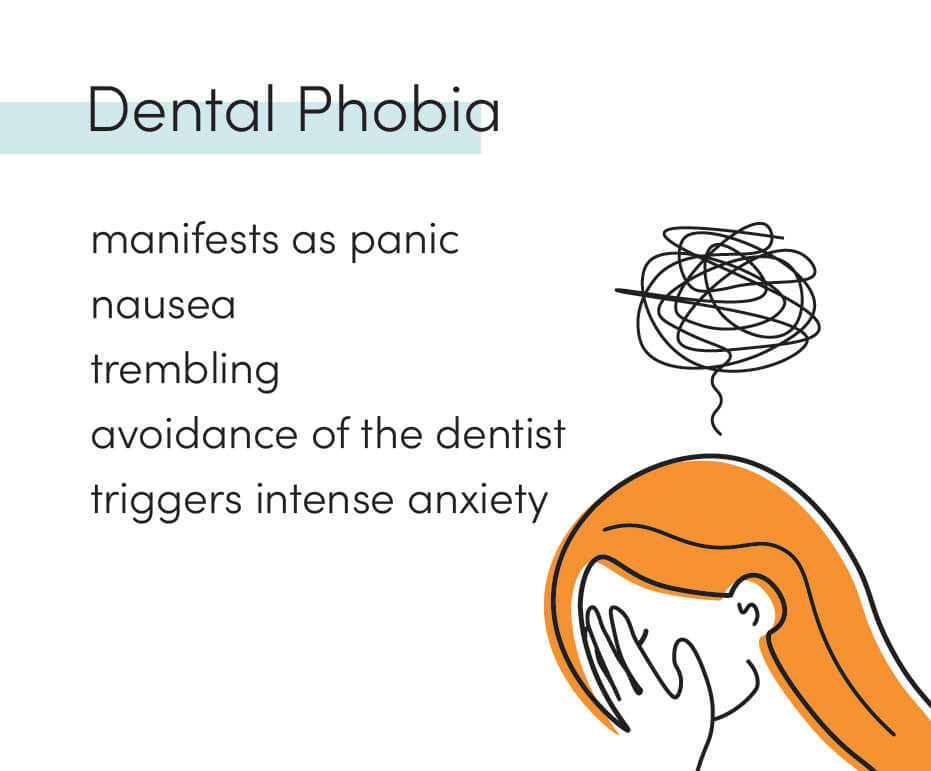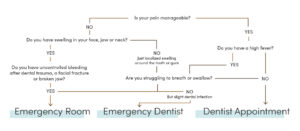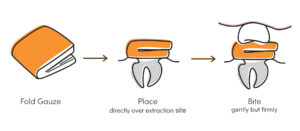Ansiedad dental: Estrategias probadas para mantener la calma durante la cita

Revisado por Dr. Dennis Rollins, DDO |
Julio de 2025 - 6 min Leer
Reviewed By Dr. Dennis Rollins, DDO | Julio 2025 - 6 min Read
Si se siente ansioso por una próxima visita al dentista, podemos decirle que es completamente normal. De hecho, la ansiedad dental es algo que nuestros dentistas ayudan a las personas a superar todo el tiempo.
Siga leyendo para obtener consejos prácticos y conocer la opinión de otros pacientes con ansiedad dental.
Qué hacer antes de recibir tratamiento
1. Considere la posibilidad de una cita de consulta
Si va a visitar a un dentista nuevo o hace tiempo que no va, puede ser muy útil empezar con una cita que se centre por completo en hablar, evaluar y planificar. Eso significa no pasar tiempo en el sillón, sin empastes, extracciones o incluso limpiezas.
Es una forma estupenda de familiarizarse con la consulta, el dentista y el personal.
2. Comparta sus temores con el dentista
Intentar “hacerse el interesante” y ocultar su ansiedad puede aumentar esa ansiedad. Ya sea en una consulta, por teléfono o antes de iniciar el tratamiento, cuéntales tu ansiedad al dentista y a su personal.
Utiliza una frase corta y sencilla, como “Me pongo muy ansioso durante las citas con el dentista”.” Sigue eso con una petición, como: “¿Podemos ir despacio y hacer descansos?”
Si hablar es difícil, también puedes comunicarlo en una nota.
Los dentistas y su personal están formados para ayudar a los pacientes ansiosos. Si se lo pides, te explicarán los procedimientos paso a paso, ajustarán sus técnicas, te tranquilizarán y te proporcionarán descansos.
Hacerse entender puede reducir drásticamente el estrés.
“Solía cancelar las citas porque tenía mucho miedo”, dijo una paciente a deltadentalma.com. “Ahora hablo con mi dentista sobre mis miedos antes de cada visita. Me ayuda a sentirme más en control”.”
“Hago saber al personal mi ansiedad”, dijo otro paciente a deltadentalma.com. “Me ofrecen almohadas, mantas e incluso un pañuelo caliente para el cuello que me ayuda a relajarme”.”
3. Pregunte con antelación sobre las opciones de sedación
Muchos dentistas ofrecen medicación suave o técnicas que pueden ayudarle a mantener la calma durante el tratamiento. Llame antes y comente las opciones, que pueden incluir óxido nitroso (gas hilarante), sedantes orales e incluso sedación intravenosa.
Si necesita ayuda para encontrar un dentista de su zona que ofrezca sedación, haga clic en aquí o llámenos al (888) 597-3896.
Haga todas las preguntas que tenga sobre seguridad, efectos secundarios y tiempo de recuperación. De este modo, sabrá qué esperar y podrá estar segura de que contará con ayuda para superar la cita.
“Pregunté por las opciones de sedación”, dijo otro paciente a uthscsa.edu. “Saber que tengo esa opción me hace sentir más cómoda”.”
4. Programar bien
Elija una hora para su cita que se ajuste a sus niveles naturales de energía y estrés.
Evite programar su cita cerca de acontecimientos estresantes de su vida profesional o personal. Plantéate una cita a primera hora de la mañana, así podrás hacerlo y evitarás pasarte todo el día con el estrés encima.
“Programar mis citas por la mañana me ayuda a sentir menos ansiedad”, dijo otro paciente a penndentalmedicine.org. “No tengo que pasarme el día preocupándome”.”
5. Planee traer a una persona de apoyo
Pedir ayuda es de valientes, y la ansiedad suele reducirse cuando uno se siente apoyado.
Considere la posibilidad de contratar a alguien de confianza para que le acompañe y le proporcione consuelo emocional antes, durante y después de la cita. Aunque no puedan estar en la sala de tratamiento, saber que están cerca puede ser tranquilizador.

Qué hacer durante el tratamiento
“Yo también tengo ansiedad dental”, dijo un paciente en reddit.com. “Siempre me siento mejor una vez que he ido. La tranquilidad después de haber ido es mejor que la ansiedad constante de saber que no has ido en x cantidad de tiempo persistiendo sobre ti siempre.”
1. Establecer una señal no verbal de “Stop”.
Una vez que el dentista y su personal conozcan tu ansiedad, establece una señal con la mano que puedas utilizar para pausar el tratamiento. Puedes utilizar esta señal si algo te duele, o si simplemente necesitas un descanso para recuperar la calma.
Establecer esta señal te dará una mayor sensación de control, lo que puede ayudarte a mantener la calma.
2. Practicar la respiración profunda
La ansiedad desencadena la respuesta de lucha o huida del organismo, lo que eleva la frecuencia cardiaca y la tensión arterial. La respiración profunda indica a tu cerebro que estás a salvo, lo que puede reducir la tensión física.
Cuando estés en el sillón del dentista, intenta ponerte cómodo e inhala lentamente por la nariz contando hasta cuatro. Aguanta la respiración hasta la cuenta de dos y luego exhala suavemente por la boca durante seis segundos. Repetir ese ciclo 10 veces puede ayudar a indicar a tu sistema nervioso que se relaje.
3. Utilizar técnicas de distracción
La ansiedad se intensifica cuando estás concentrado en la preocupación o anticipando el dolor. A menudo resulta útil distraerse del tratamiento que estás recibiendo.
Puedes llevar auriculares y escuchar música, podcasts o meditaciones guiadas. Puedes contar o visualizar un lugar favorito. También puedes repetir un mantra positivo en tu mente. Puede ser algo tan sencillo como “Estoy a salvo. Tengo el control”.”
“Llevo mi lista de reproducción favorita y auriculares”, dijo un paciente a penndentalmedicine.org. “Me distrae y hace que el tiempo pase más rápido”.”
4. Utilizar la Relajación Muscular Progresiva (PMR)
La ansiedad suele provocar tensión muscular involuntaria, lo que intensifica la sensación de estrés. La PMR es una técnica que ayuda a relajar los músculos.
Empiece por los dedos de los pies. Tensa suavemente esos músculos durante cinco segundos y luego suéltalos. Haz lo mismo con las piernas, el estómago, los hombros, los brazos y luego la cara. Concéntrate en el contraste entre tensión y relajación.
Puede utilizar este método de camino a la consulta, en la sala de espera y durante el tratamiento.
“Practico ejercicios de respiración profunda antes y durante mi cita”, dijo otro paciente a scottsdalesmile.com. “Me ayuda a calmar los nervios”.”
Diferencias entre ansiedad y fobia dental
Muchas personas experimentan ansiedad dental. Otras tienen una fobia real. Comprender la diferencia puede ayudarte a elegir las mejores estrategias para afrontar la situación.
Ansiedad dental
Se trata de nerviosismo o preocupación general ante la visita al dentista. Se manifiesta como miedo de leve a moderado, inquietud, sudoración de las palmas de las manos, aumento de la frecuencia cardiaca y/o evitación leve.
Utilizando los métodos recomendados anteriormente, las personas con ansiedad dental suelen poder superar la cita con el dentista.
Fobia dental
Se trata de un miedo grave e irracional a los procedimientos dentales. Se manifiesta en forma de pánico, náuseas, temblores y/o evitación del dentista durante años. Para las personas con este trastorno, el simple hecho de pensar en una visita al dentista puede desencadenar una ansiedad intensa.
Si esto describe su experiencia, considere la posibilidad de una intervención profesional como el asesoramiento o la terapia cognitivo-conductual. Merece la pena dedicarle tiempo y esfuerzo, porque la salud dental es clave para la salud general.


¿Necesita ayuda para encontrar un dentista?
Información relacionada

¿Debe acudir a urgencias por dolor de muelas? Guía rápida
La conveniencia de acudir a urgencias por dolor de muelas depende de la gravedad del dolor y de los demás síntomas que experimentes. Sigue leyendo y te ayudaremos a decidir cómo aliviarte.

Cómo detener el sangrado después de la extracción del diente: Consejos fáciles para un alivio inmediato
Tras la extracción de un diente, es normal que se produzca una hemorragia en la zona, que suele remitir en 2-3 horas. Durante las primeras 24 horas suele seguir supurando suavemente (saliva rosada). A continuación encontrarás consejos para ayudar a detener la hemorragia y cómo diferenciar entre una recuperación normal y los signos que indican que debes llamar a tu dentista.

¿Por qué me duelen los dientes por la noche? 5 posibles razones y lo que puede hacer ahora mismo
Los problemas dentales suelen doler más por la noche porque al estar tumbado aumenta el flujo sanguíneo a la cabeza, lo que incrementa la presión y la sensibilidad. Otras causas comunes son el aumento de la presión en los senos paranasales y apretar y rechinar los dientes inconscientemente. Aunque la solución a largo plazo puede requerir una visita al dentista, hay medidas que puedes tomar inmediatamente para obtener cierto alivio.
